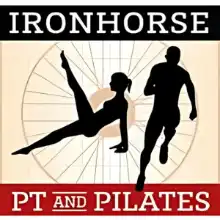A large number of women consider pregnancy and childbirth as an amazing experience, but it also takes a toll on the body. As a new mother, you may want to regain your physical fitness and start running again. However, it is important to handle this transition with care and assistance from professionals to have a safe comeback to running.
Our team at Ironhorse Physical Therapy & Pilates in San Ramon, San Ramon CA appreciates the unique predicaments faced by postpartum women. It is committed to offering the necessary support and knowledge for a smooth return to running after pregnancy.
In this article, we have gone into great detail explaining why postpartum recovery is important, some of the challenges that could be faced when mothers go back into running, and how they can reach their fitness goals while keeping their overall health in mind. Let’s take a look at why you experience pain after running during pregnancy.
The Importance of Postpartum Recovery
Childbirth and pregnancy are physically strenuous situations that can significantly impact a woman’s body. In this period, the muscles of the abdomen, pelvic floor, and other support structures undergo major changes to accommodate the growing baby.
Additionally, hormonal fluctuations and the physical strain of labor can contribute to muscle weaknesses, joint laxity, and other physical challenges.
It is very important to allow for appropriate post-partum recovery before attempting high-impact activities such as running marathon after pregnancy.
The healing process takes time after childbirth, and it is during this time that one should regain strength in order to help prevent possible injuries or long-term issues later on.
The journey to recovery is unique for each individual woman so it’s important to listen to your body and seek professional advice to ensure a safe gradual return to exercising.
Potential Challenges for Postpartum Runners
Though they may have an overwhelming desire to get back into running, women who have just delivered may encounter several problems that affect their ability to run with comfort or efficiently:
- Weakness in the Pelvic Floor
- Abdominal muscle separation (Diastasis Recti)
- Laxity in Joints and Unsteadiness
- Tiredness And Time Restraints
Unaddressed by means of proactive measures involving a qualified physical therapist, these challenges can increase injury risk while returning successfully back into running.
The Role of Physical Therapy
Ironhorse Physical Therapy & Pilates is a place where licensed physical therapist works with postpartum women in San Ramon, San Ramon, CA, to help in getting back to running after pregnancy.
Our therapists will conduct a comprehensive evaluation to assess your specific needs and develop a personalized treatment plan tailored to your circumstances.
San Ramon Physical Therapy can play an important role in helping postpartum runners overcome obstacles such as:
- Pelvic Floor Rehabilitation
- Strengthening and Stabilization Exercises
- Running Gait Analysis in San Ramon, CA, and Running Form Correction
Pelvic Floor Rehabilitation
The pelvic floor muscles have a very important role in the support of the pelvic organs, maintenance of continence and provision of proper core stability. These muscles can be weakened or damaged during pregnancy and childbirth, hence leading to problems such as incontinence, prolapses of the pelvic organs, and decreased core stability.
When performing high-impact activities like running, this health complication can be reduced through strengthening and retraining those muscles by engaging in pelvic floor rehabilitation that is supervised by a qualified physical therapist.
To incorporate these needs properly and ensure perfect condition for your pelvis floor, various things may be used by your physical therapist, including exercises for specific muscles of your pelvis floor, biofeedback, electrical stimulations, and hands-on therapies.
Strengthening and Stabilization Exercises
The abdominal and core parts are undoubtedly some of the muscles that can become weak due to pregnancy and childbirth. This situation is very crucial for any mother who intends to continue running after childbirth because it is only through targeted strengthening and stabilization exercises that such a problem can be dealt with.
To rebuild strength and stability in your core, hips, and other support muscles, you need a thorough exercise plan, which will be prepared by your therapist. These may include planks, bridges, squats, or different stability ball exercises.
Developing overall core strength and stability can enable you to run better by making you more resistant to forces of impact associated with running, therefore lessening chances of injuries; hence enhancing your running performance generally.
Gait Analysis and Running Form Correction
The efficiency of running will be maximized if people use the right form, minimize risks for injury and improve on the output. Nevertheless, injuries can change a woman’s movements during running by altering her mechanics.
Gait analysis is one of the services offered at Ironhorse Physical Therapy & Pilates where they examine how you walk or run thoroughly. This may entail video analysis, force plate measurements, or other high-tech techniques used to evaluate your movement patterns.
In response; your physical therapist can give you some recommendations that would rectify any imbalances in your running form and hence lead to inefficiencies. These are likely to include specific exercises, gait retraining strategies as well as appropriate assistive devices and/or orthotics for better running patterns.
The Importance of Nutrition and Hydration
Proper nutrition and hydration are fundamental for postpartum women, particularly those beginning their journey back to running. Women have higher nutritional requirements during pregnancy and breastfeeding thus; it is essential to replenish the body with vital nutrients for recovery, energy levels as well as overall health maintenance.
Ask your physical therapist or registered dietitian about how to plan a healthy diet that contains all necessary nutrients according to individual needs. This may include the provision of enough protein intake for muscle repair and growth as well as adequate essential vitamins plus minerals balance in order to avoid nutrient deficiencies.
For mothers who have just given birth, it is important to be well-hydrated as they engage in postpartum runs. Fluid requirements are also increased by breastfeeding and the physical strain of exercise, thus requiring a constant supply of water throughout the day. Your doctor or physical therapist can offer advice on how to best drink for example what amounts of fluid you should take or options that exist for electrolyte replenishment.
Managing Expectations and Setting Realistic Goals
Returning to running after pregnancy can be a difficult and emotional path. It is important to have realistic expectations and to set manageable objectives in order not to become disheartened or frustrated. Now, let’s take a look at how to get back into running after pregnancy.
Remember that your body has changed greatly during pregnancy and childbirth, so it might take some time to return you back to your previous level of fitness before childbearing. Take your time and appreciate small accomplishments.
Based on your existing fitness levels, the progress of recovery, as well as other parameters required by physical therapists, together you will come up with reasonable goals for yourself. These may be aimed at first restoring muscle power, then enhancing stamina and finally increasing distance or intensity gradually.
Addressing Mental and Emotional Challenges
For many women, the journey of pregnancy, childbirth, and postpartum recovery can be emotionally difficult. These emotions include anxiety, stress, and changes in body image and self-esteem as well as other physical demands.
These mental and emotional challenges should never be ignored or overlooked since they may affect your ability to stay motivated, comply with your recovery plan, and achieve good health.
Your therapist will guide you concerning these difficulties. These recommendations may involve such approaches as mindfulness practices, stress management techniques or positive thinking methods that would help you incubate a sound mentality as well as become unyielding.
Additionally, seeking support from partners, enrolling in postnatal care clubs, or attending counseling sessions would assist a great deal in handling the psychological aspects of this expedition.
Therefore, by responding to mental and emotional problems, you are more likely to successfully go back to running after pregnancy with an increased confidence level towards yourself and an overall sense of well-being. Do not forget it is equally important to take care of your mental health along with emotional feelings just like concentrating on the physical healing process.
Conclusion
However, it takes time, devotion, and the right advice from professionals to ensure a woman gets their running after pregnancy plan. In San Ramon, CA, Ironhorse Physical Therapy & Pilates often helps new mothers who want to run again get back on track.
We will teach you how to come back safely and successfully with a custom-made plan of treatment, pelvic floor rehabilitation, strengthening exercises, gait analysis, and step-by-step return-to-running programs.
Remember that every postpartum experience is different and it is important for women to listen to their bodies as well as involve experts. With proper guidance and support though you can recover your physical strength, confidence, and love of running while at the same time taking care of your general health.
If you are a mother postpartum ready for jogging again do not hesitate reaching out to Ironhorse Physical Therapy & Pilates in San Ramon, San Ramon CA. Our partners are guiding women through this continuous process of empowering them until they reach their physical well-being objectives whilst honoring the magnificent journey performed by their form.


